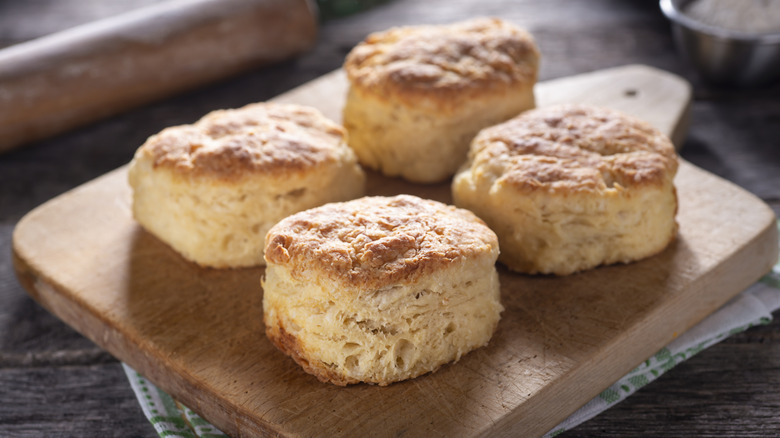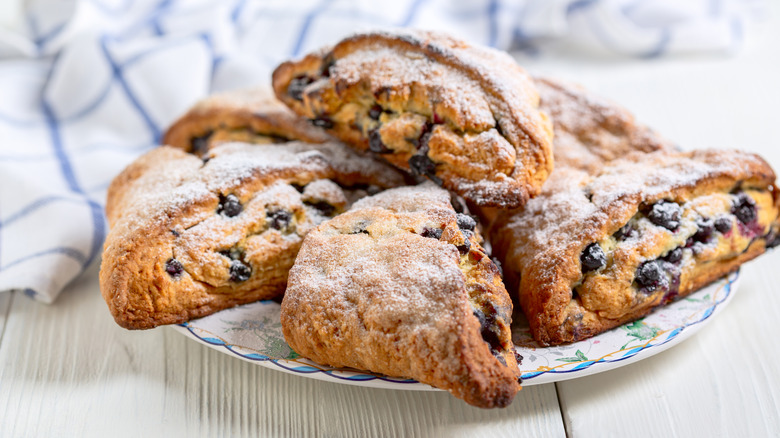Biscuits Vs Scones: Is There A Difference?
First of all, biscuits and scones have a lot in common. With a couple (crucial) exceptions, both contain the same basic ingredients: flour, butter or lard, and a liquid to bind the dough together. Like muffins and pancakes, they're both quick breads — a family of pastries that rely on chemical leavening (e.g., baking soda and/or baking powder) rather than yeast to rise in the oven. Both scones and biscuits originated in the British Isles, brought by colonists to this continent. And they're both, if they're made well, soft and tender within, and often a bit craggy and crunchy on the outside. You might see scones more often cut into triangular wedges and biscuits shaped into a circle — but each can really come in any shape.
What divides them, then? The quickest answer is that scones tend to have less butter and more liquid; their dough, unlike biscuit dough, can sometimes include eggs and sugar. Without the latter, biscuits can more easily straddle the sweet-savory divide, rendering them perfect for a DIY biscuit brunch bar that makes everyone happy. Bakers don't pile add-ins into biscuits (dried fruit, chocolate chips, ham and cheese) like they do with scones. With their higher fat content, biscuits are also sometimes laminated when they're being made — that is, the dough is folded over on itself to produce those fine, flaky layers. Here's some of the backstory on these two pastries — relatives to one another, if not exactly twins.
How biscuits and scones became American
Biscuits and scones both come from the same place, but if you order a biscuit in England today, don't expect something doused with gravy: British "biscuits" are more like cookies. British scones, meanwhile, are closer to American scones, though more austere. With the occasional exception of currants or raisins, they usually don't have any add-ins, and are served plain with jam, butter, and/or clotted cream (applied to one's scone, of course, in a very specific order). Accordingly, the dough for American scones may have a bit more liquid in it than that for British scones, making the finished product better able to support bits of bacon and cheddar, nuts and berries, and what have you.
Like the English accent, the British scone hit American shores and went in two directions: north and south. In the South, where low-protein wheats, buttermilk, and fats like butter and lard were commonplace, the biscuit developed as we know it today — lighter owing to that soft wheat, with a taller profile than scones and often a buttermilk sharpness. In the North, particularly New England, scones stayed more similar to their European ancestors. For a while they flew under the radar, served mostly with tea in places like fancy hotels. They didn't really hit the mainstream until the 1990s, when the coffee shop boom introduced them first to the Pacific Northwest and then to the rest of the country, eventually giving them the ubiquity they enjoy today.

